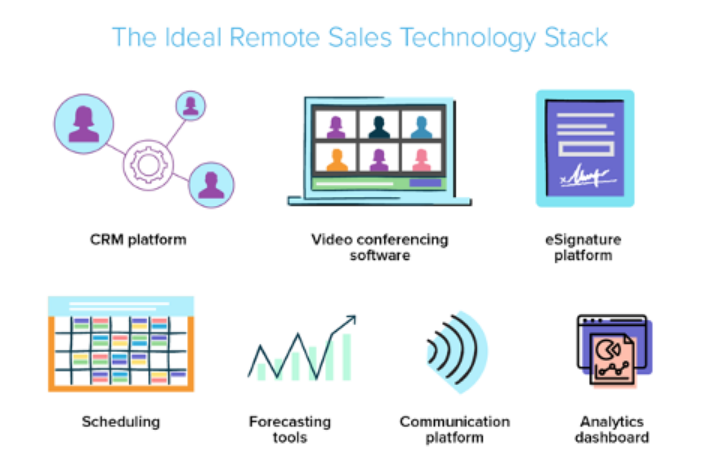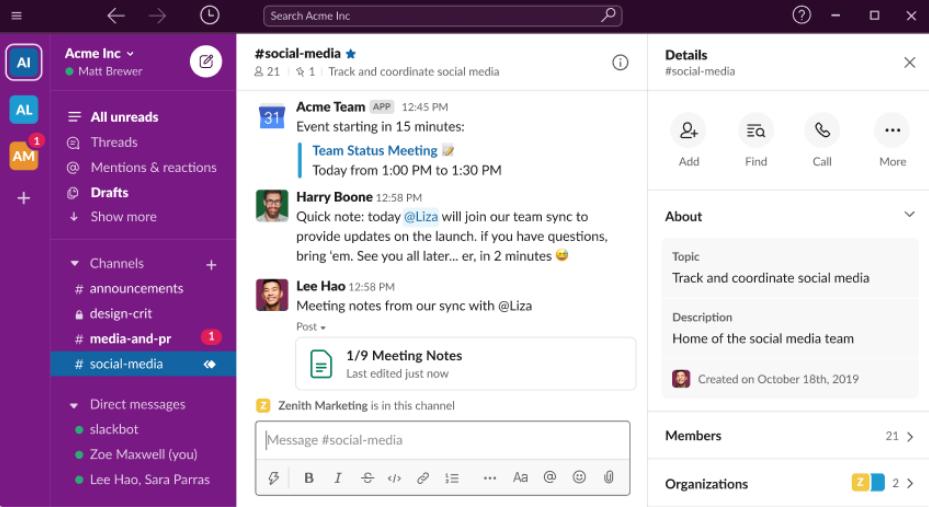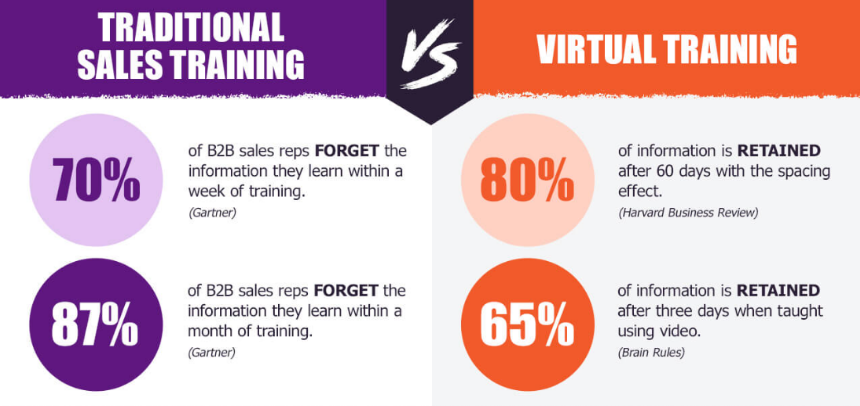The Ultimate Guide to Building and Managing a Virtual Sales Team
Since the coronavirus pandemic, companies have been facing the same challenge – how to effectively manage their teams off the office. And although many businesses seem to have already got used to the new reality, for organizations that are only starting their way to growth, building and keeping a virtual sales team on track is hard.
If it resonates with you, read on this small guide to walk through the process and get a portion of tips for building and managing a virtual sales team. But let’s start from the basics.
What is a virtual sales team?
A virtual sales team is a team of salespeople who work virtually, or remotely. That suggests there’s no common office space. As an alternative, every sales rep works from their ideal location. For instance, a few of your sales reps might live in Miami, while others are based in Los Angeles.
Keep in mind that a virtual sales team is very different from a hybrid team – a model where every employee prefers working both remotely or in person in a physical office space.
What are the challenges of managing a virtual sales team?
Let’s look at the main factors that make remote team management difficult. Among the most common challenges are the following:
Collaboration problems. About 17% of employees claim they feel cooperation barriers due to the lack of face to face communication.
Productivity problems. Some employees become disorganized and less productive when they need to work from the relaxed atmosphere of home, which slows down the whole team.
Stress. By contrast, 22% of employees confess it is difficult to unplug after work. As a result, they can’t balance work and rest, feel pressure, get stressed, and end up getting professional burning over time.
How to overcome these challenges? What can you do as a sales manager to make your virtual sales team well-organized, committed, and satisfied with the job?
Constituents of a virtual sales strategy
You can’t manage your remote sales team effectively unless you have a clear virtual sales strategy in front of you. The virtual sales strategy consists of the following elements:
- a sales process
- a sales team
- sales tools
- sales metrics
- sales enablement strategy
Let’s look at these elements in detail.
A sales process
The virtual sales process may be perceived by your sales team as unfamiliar, uncomfortable, and hectic. You are not the only manager who’s facing this problem.
Take time to outline and document your sales process. Think carefully about how you’ll organize it: what communication channels you’ll use, how often you’ll gather with your team for meetings, how the reporting will be done, etc.
Remember to share the remote sales process plan with your team so everyone understands how you’re going to cooperate.
A sales team
Your virtual sales campaign won’t be successful if it doesn’t have the right people behind it. As a manager, you need to evaluate your sales people’s current performance and preferences to get a clear vision whether your team is ready to work remotely.
In addition, you should ensure every sales rep understands the scope of tasks and responsibility, knows how to maintain high productivity and efficiency while working remotely, and has no trouble cooperating with other team members.
Sales tools
Thanks to AI and automation, virtual sales teams are powered by more customer data than ever before. Sales engagement, enablement platforms, data analytics, and CRM tools help your team maintain high productivity and boost their ROI. So, you should forearm your sales reps with the sales platform which will make their virtual performance as comfortable as possible.

Source: salespop.net
For example, with such tools as Snov.io CRM, you can get your virtual sales team on board owing to unlimited teamwork opportunities, prioritize and allocate deals, and use email verification finding and sending tools to optimize the outreach.
Sales metrics
One of the best ways to manage your virtual sales team is through metrics. The amount of time spent on prospecting, the number of calls made or emails sent, the number of deals closed, etc. should be tracked on a regular basis.
Think of the metrics which make sense in your organization and again, inform your sales team how their performance will be monitored. Ensure everyone understands the criteria of their performance evaluation.
Sales enablement strategy
Apart from sales tools, your virtual sales team should be provided with knowledge, content and effective training that will allow them to demonstrate high performance. Think of how you can equip employees with all the resources they need.
Say, you may create a virtual library with necessary sales books, hold regular sales coaching sessions, provide your sales team with email templates for their virtual sales outreach, etc.
How to manage a remote sales team
Now that we’ve discussed the basic elements of a virtual sales strategy, let’s focus on practical ways of managing your remote sales team. Below you’ll find eight actionable tips on how to get your sales rep together, ensure their high productivity and job satisfaction off the office.
1. Set clear goals and expectations
Sales reps are some of the most goal-oriented individuals in any workplace. Your role as a sales manager is to adjust the team goals to the changing virtual environment and communicate expectations to every sales rep in a clear way.
Set measurable goals and KPIs that your sales people will understand. These goals must be motivational enough to make your sales team strive for improving their performance.
2. Build trusting relationships
Trust is built up in a team over time. If you’re not spending eight hours every day in the same physical office, it naturally takes a lot longer.
You should support healthy teamwork among your remote staff by giving the right mix of team versus individual recognition, clarifying roles in the sales process, and encouraging your salespeople to provide you with their regular feedback.
Ensure your team feels you value their opinion and their voice is heard. This will improve engagement and make every sales rep more involved in the process. And remember: the team that trusts their manager has less stress and demonstrates higher results.
3. Listen to salespeople’s needs
To manage your entire virtual sales team, you need to understand the needs of every member. Make it a habit to conduct virtual one-on-one meetings with your staff where you’ll encourage them to share their feelings about the job. Ask them what they like most about it, what challenges they face, and offer ideas on how their working process can be improved.
In some companies, this role may be entrusted to the HR department. The latter will gather information about sales reps and pass it to a sales manager, who’ll further evaluate the climate within the team.
4. Encourage your team to find their individual workflows
Sales is a hard routine. Don’t make it harder for your sales team by too much control. You want to build trust, remember? Start with yourself. Demonstrate you trust your reps and let them choose their own path in achieving goals.
Have private talks with the employees, grasp their personal sales hacks, and encourage them to share the best practices with each other.
5. Invest in resources everyone can use
Guarantee that your remote employees have access to the same virtual selling tools their on-site counterparts have. If that suggests moving applications and resources to the cloud, do it.
Empower your employees with everything they need for effective closing of deals. Ensure information about the sales process is transparent and all new employees get a substantial onboarding experience before they join the rest of the sales team.
6. Encourage social interaction
Low levels of employee engagement will ruin your bottom line. Engaged employees are often much more productive than disengaged ones. When it comes to remote teams, where human contact is minimal, it is easy for social interaction to slip.
That’s why it is essential for you to take steps to encourage people and mitigate factors that frustrate your employees. The ideal way to do this is by holding regular meetings each week — even if only 15 minutes — to keep your team engaged.
7. Use team communication tools
The world has increasingly been using Zoom conferencing for meetings for several years. Apart from this popular tool, find solutions for your sales team to communicate daily. Luckily, there are dozens of effective messaging platforms available nowadays like Slack, Mattermost, or simply Google Chat.
For example, in Slack, you can create group channels where you’ll share sales tips and hacks, communicate with team members via direct messages, create polls for group opinions, what not.

Source: Slack
8. Conduct regular virtual sales training
It’s essential to hold consistent virtual sales training meetings for your entire sales team. And if you think that virtual training is not so effective than in-person sessions, numbers will tell you a different story: while B2B sales reps forget 70% of the information they learn within a week of training, sales reps may retain 80% of information learned during virtual training after 2 months with the spacing effect.

Source: Vengreso
Set up your training program to teach your sales team important sales skills, some of which are:
- Product knowledge. Keep your team updated on any changes to your company product to ensure they know it inside out.
- Ability to handle sales objections. ‘No’ is a usual response sales people get from prospects. Consider all sales objection scenarios and teach your staff how to turn ‘no’s’ into ‘yes’.
- Time management. Train your sales people on how to organize their sales routine so they stay productive – e.g. through automation tools. These technologies will do the monotonous work and help your sales reps stay more focused on such activities as personalized interactions with prospects.
Skills your sales people gain during regular virtual coaching sessions are just like muscle training in the gym – they help them keep their professional confidence in good shape. And if you add a bit of gamification to the process, the training will be fun. interactive, and most engaging for your employees.
Wrapping up
If you want to build and manage a remote sales team, you need to be prepared to adjust your management style to the virtual working environment. Remember that remote work isn’t the same as on-site work.
You need new methods, strategies, and tools for engaging your staff and motivating your team to hit their targets. Whatever you plan to do, make it a part of your routine and business interactions. Your virtual employees will certainly appreciate it and create the kind of culture that people always want to be part of.













